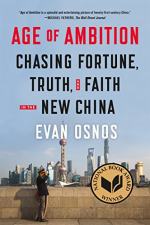|
This section contains 1,535 words (approx. 4 pages at 400 words per page) |

|
Summary
Chapter 19 focuses on the decline and reemergence of religion and spirituality in Chinese culture. Osnos begins by describing how Mao’s Cultural Revolution affected China in the late 1960s. Designed to cement the Chairman’s power as others within the CCP sought to push him out, the Cultural Revolution encouraged young Chinese to form a cult of personality around Mao. His revolutionary ideas, collected in his famous “Little Red Book,” became a source of spiritual fascination.
Simultaneously, traditional Chinese cultural and spiritual influences, including religious institutions, were suppressed and eliminated from mainstream society. The government seized religious property, destroyed temples, and outlawed religious practice, claiming it was counterrevolutionary. The author profiles one well-known poet, Lao She, who committed suicide after he was harassed and humiliated by party members at temple in Beijing. More recently, after the government liberalized restrictions on religious practice, Chinese...
(read more from the Chapter 19-21 Summary)
|
This section contains 1,535 words (approx. 4 pages at 400 words per page) |

|




